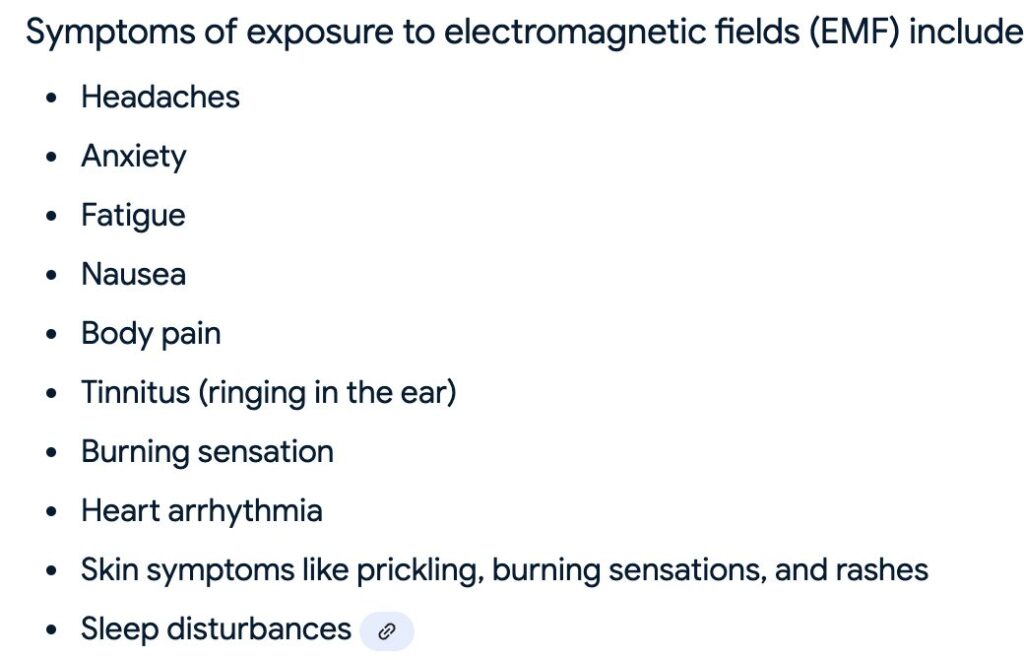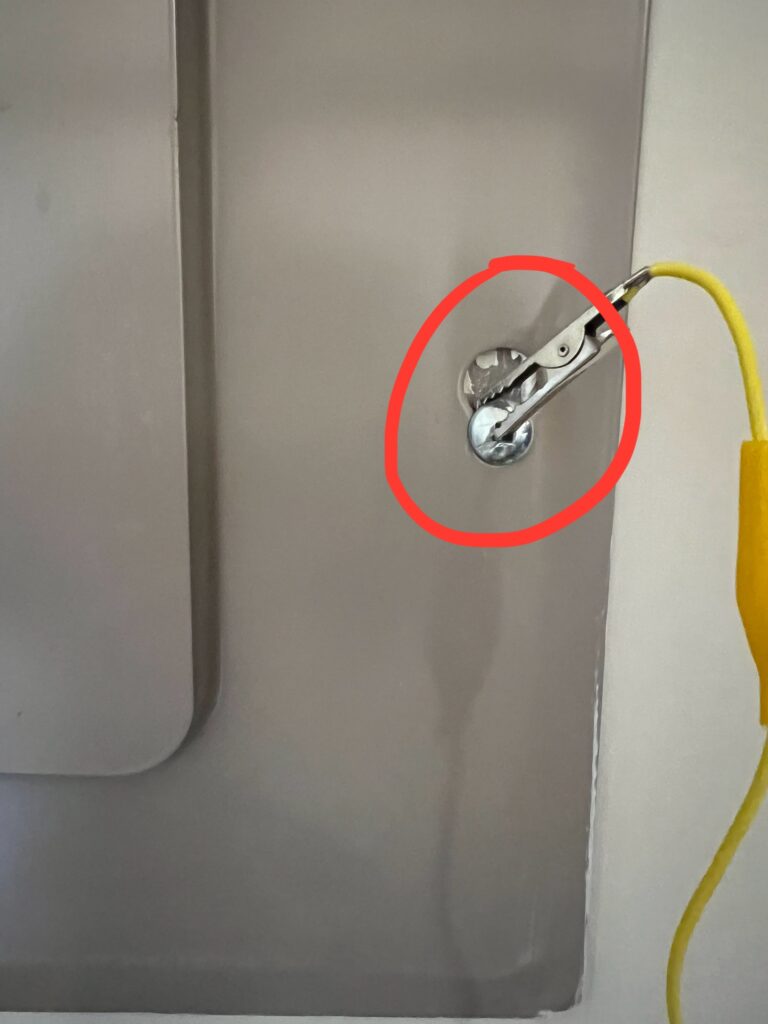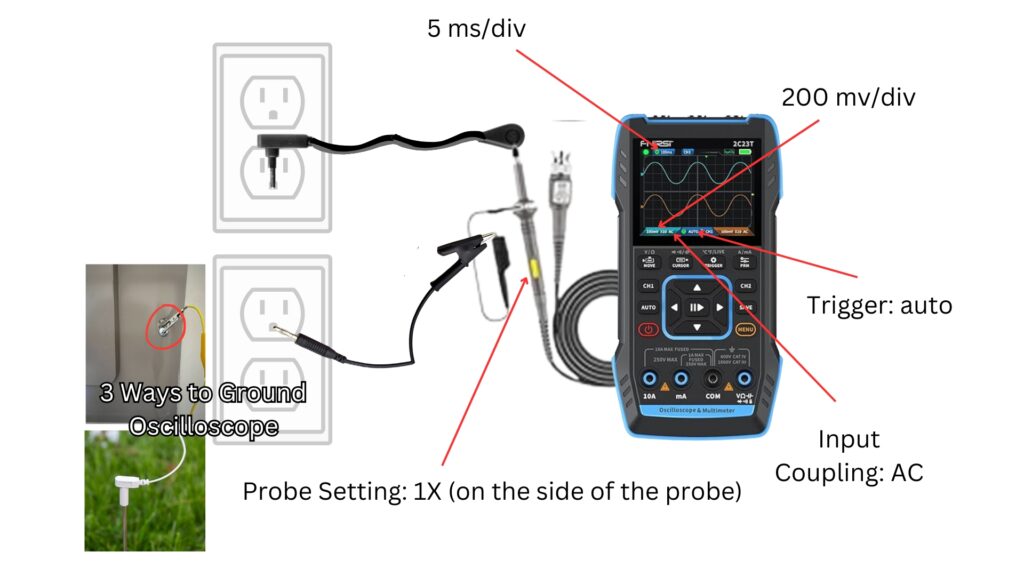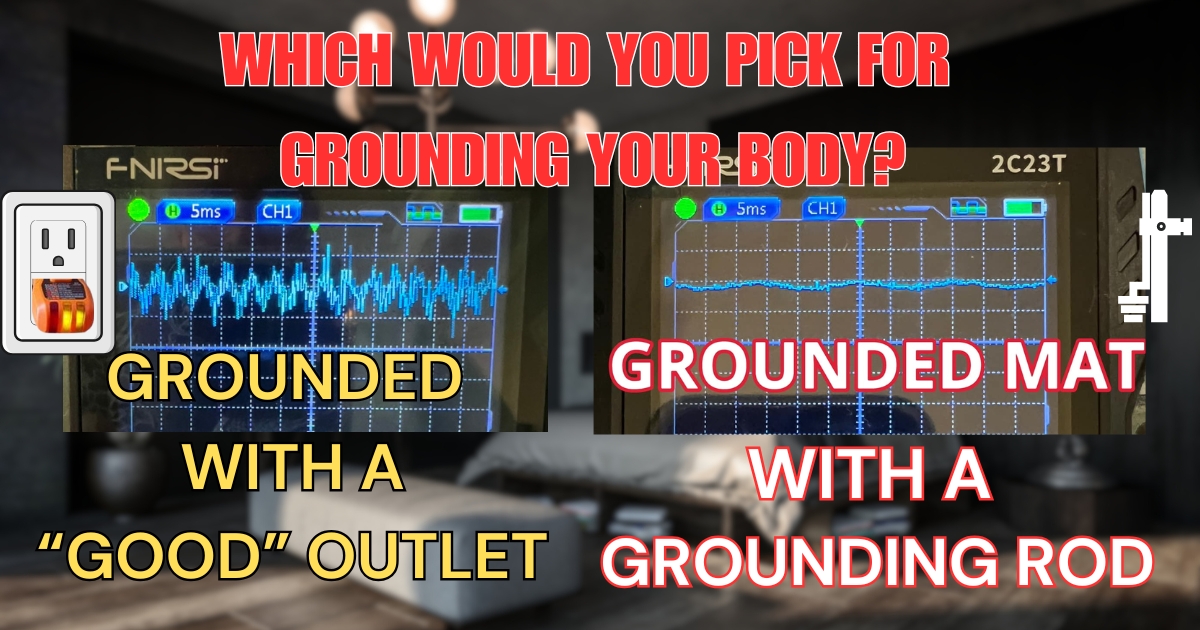The above images are oscilloscope waveforms of the stray electricity from a properly grounded outlet verified by a conventional 3-light outlet checker (left) and from a grounded mat using an outdoor Earthing grounding rod (right). I think this stray electricity can vary in intensity from home to home and may be causing unwanted symptoms in people who use the outlet with their grounding products. I have been monitoring thousands of posts on the Earthing & Grounding HEALS group on Facebook for more than six years. We’ve grown from a community of a few thousand to over 46,000 members, with 400+ new members weekly.
I have noticed a trend. While few may experience “grounding detox,” many cases of headaches, fatigue, heart palpitations, anxiety, insomnia, aches, and EMF-related symptoms are more likely caused by EMF toxicity from stray electricity in outlets. Often, these symptoms go away when people switch from the outlet to a dedicated grounding rod outside. Although these outlets meet electrical codes for fire safety and equipment, they were never designed as human-grade grounding points.

We have medical-grade water, saline, and instruments, but no equivalent for indoor grounding. So why assume all outlets are safe for grounding the human body?
I posted a poll to assess how many people experienced detox symptoms.


Poll Insights:
This Facebook group of over 46,000 members is the largest community for earthing/grounding. In just two days, we gathered significant responses:
• 46% initially practiced barefoot earthing outdoors, and only 2% reported detox symptoms.
• 50% used an outlet to ground initially, with 43% reporting detox symptoms.
• 4% experienced detox symptoms using an outdoor grounding rod.
• 51% reported no detox symptoms at all.
Out of 283 respondents, 121 reported detox symptoms from outlet grounding, while only 4 reported detox symptoms from barefoot grounding. Notably, half of the respondents experienced no detox symptoms.
A Word of Caution:
Roy Cooke, a former Master Electrician and moderator, has inspected over 4,000 homes and notes that only 50% of outlets are wired correctly. The 46% correlation between outlet grounding and detox symptoms is significant and should challenge the assumption that all outlets are safe for grounding.

While many users report positive results from outlet grounding, this may be due to low levels of stray electricity or personal adaptation. For some, the benefits of grounding outweigh the minor side effects. In medicine, we see similar scenarios where patients tolerate side effects for the greater benefit of treatment. However, in this case, symptoms like headaches, fatigue, and palpitations are likely side effects of grounding with improperly wired or less-than-ideal outlets—not true detox.

To test the safety of an outlet for grounding, you’ll need an oscilloscope, shielded copper wire or speaker wire long enough to connect from your main electrical panel to the outlet being tested, an Earthing cord, and alligator clips.
Follow these steps:
1. Using an outside ground with a grounding rod and wire is best for grounding the oscilloscope. However, if you live in a highrise, then locate the grounded bolts on the outside of your main electrical panel (CAUTION: DO NOT OPEN THE PANEL UNLESS YOU ARE QUALIFIED AS AN ELECTRICIAN). These bolts are connected to the building’s ground.

2. Attach one alligator clip to a bolt and connect it to your copper wire, which will be used to ground the oscilloscope.
3. Use the alligator clip on the oscilloscope probe to ground the probe to the wire.

4. Plug the Earthing cord into the outlet ground and touch the oscilloscope probe to the metal portion of the Earthing cord.
5. Observe the waveform and voltage output on the oscilloscope. Ideally, the waveform should be flat, with no significant stray voltage.
Important Notes:
• Stray voltage in the outlet ground exceeding 2–4 volts is generally considered unsafe and warrants further investigation.
• For grounding the human body, even 2–4 volts is far too high. Ideally, stray electricity should be as low as possible—likely less than 50 millivolts (0.050 V).
• Unfortunately, there is insufficient data to define safe levels of stray electricity for human grounding. If the outlet is making you feel ill, then stop using the outlet with your grounding products.
Recommendation:
Choose an outlet or grounding method with the lowest measurable stray electricity. For maximum safety, consider using a dedicated outdoor grounding rod.
Key Takeaways:
1. Improper grounding can worsen symptoms. Poorly grounded outlets may introduce stray electricity into your body, amplifying EMF toxicity.
2. Verify your outlets. Ensure outlets are properly grounded, but don’t rely solely on outlet testers—they are often inaccurate. Use an oscilloscope to detect stray electricity.
3. Consider alternative grounding systems. Shared grounding systems in apartments or homes can carry stray electricity from other appliances. Outdoor grounding rods or metal cold water pipes are safer alternatives.
4. Listen to your body. If grounding via an outlet makes you feel worse, stop using it and switch to an outdoor rod-based system.
Let’s prioritize safe and effective grounding practices to minimize risks and maximize benefits!
- FNIRSI 2C23T Digital Oscilloscope: https://amzn.to/49Yax7k
- Voltmeter for body voltage measurements: AstroAI Digital Multimeter, TR in MS 6000 Counts Auto-Ranging M6K0R: https://amzn.to/3UJeo1N
- Banana Plug to Alligator Clip Test Lead to ground the meter: https://amzn.to/4j5uBZU
- I have used Earthing products for over 5 years and love them. I recommend the Earthing mattress cover under a 100% cotton sheet: https://tinyurl.com/5fa5b9ut
- Earthing grounding rod with 40’ cable: https://bit.ly/3Zl0gOX


Leave a Reply